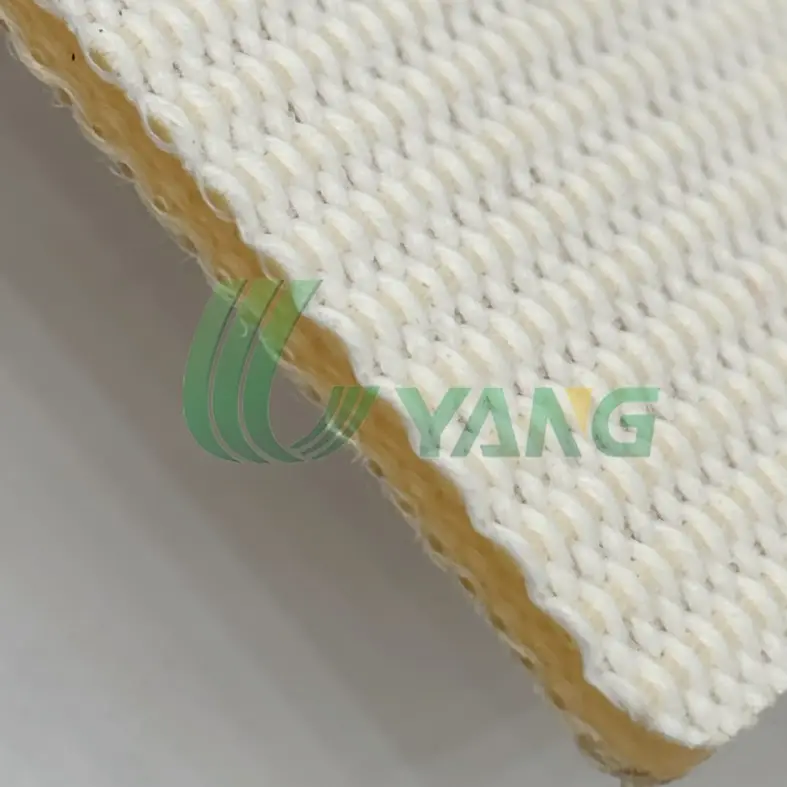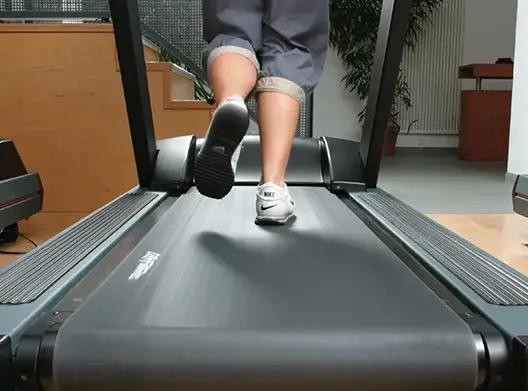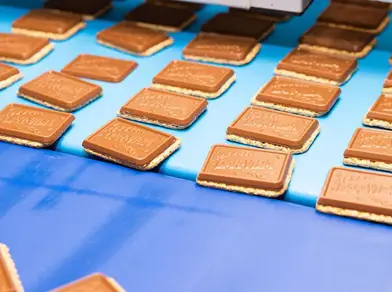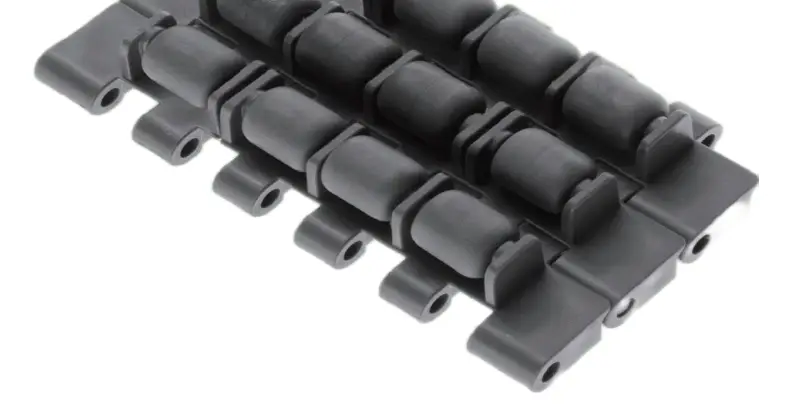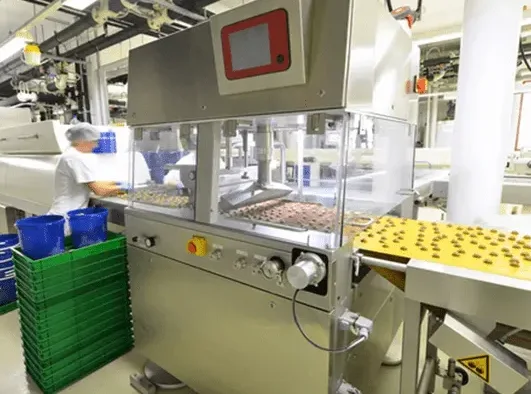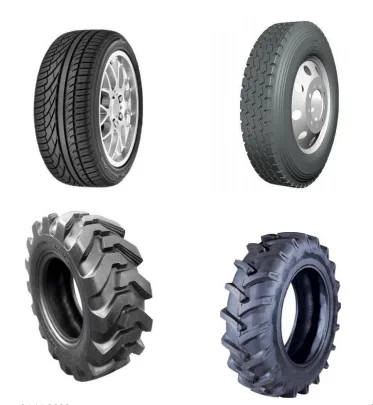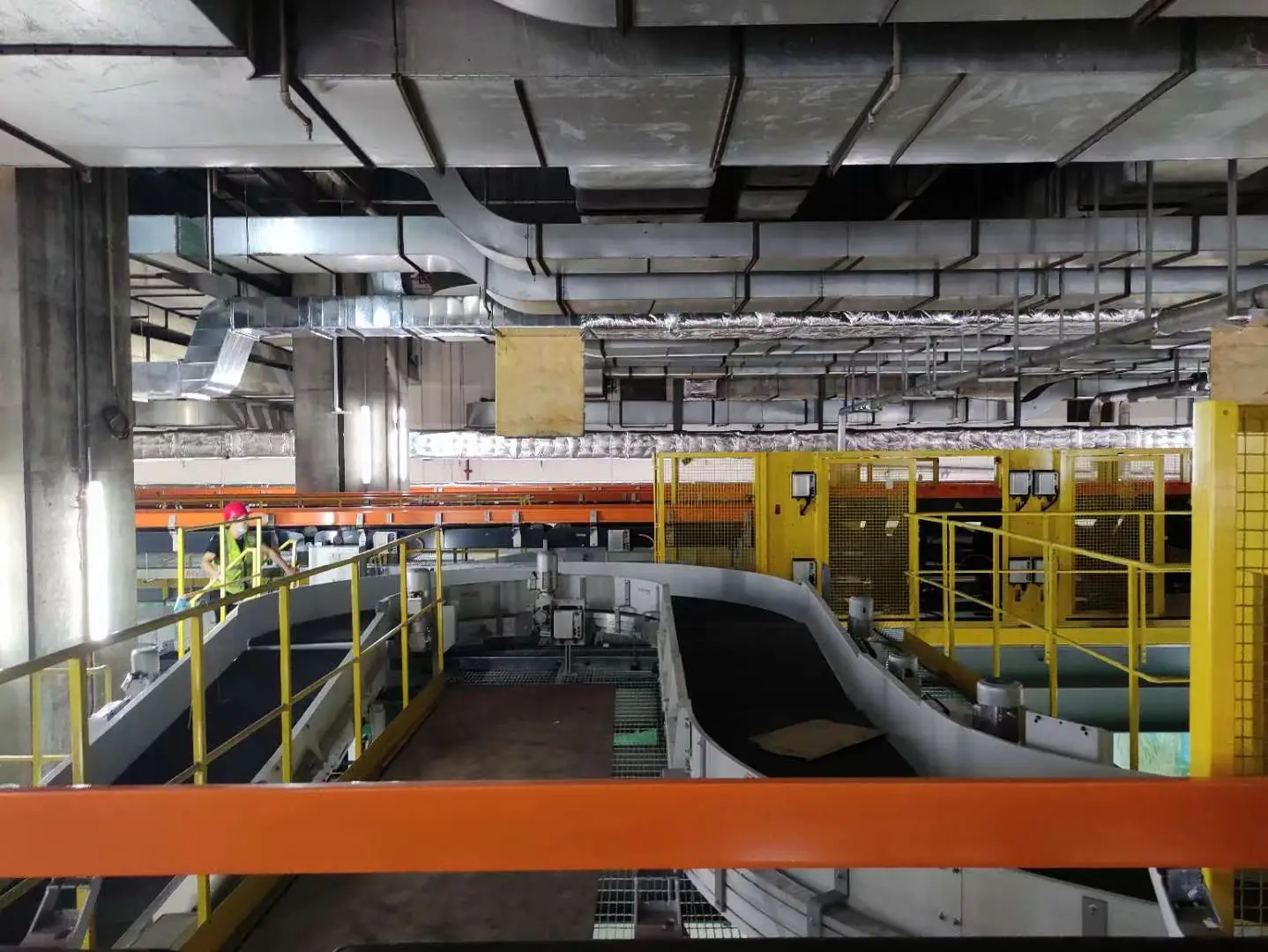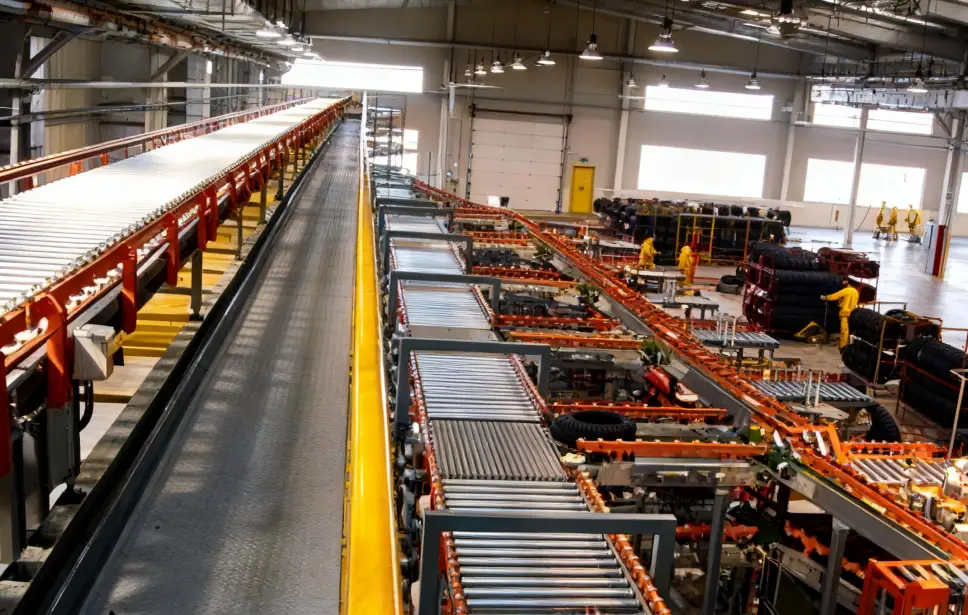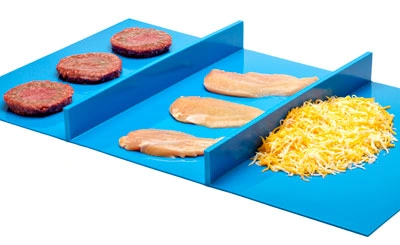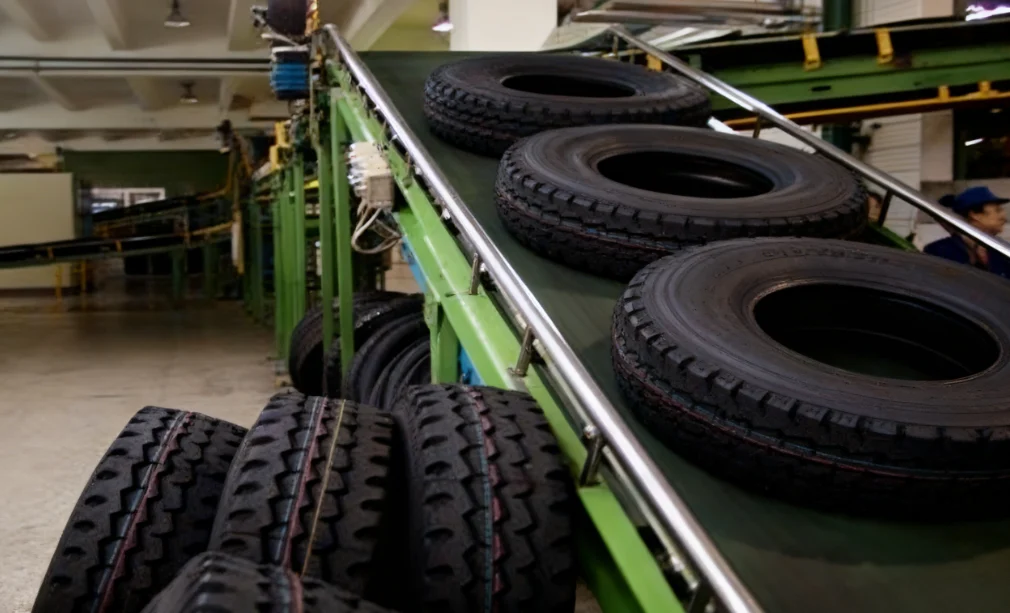Seafood processing is a tricky job. Keeping things clean and working fast are super important. Fish and shrimp can go bad quickly, so they need extra care to stay safe. The right tools, like conveyor belts, make a big difference. Uyang Belting, a company with over 20 years making awesome belts, offers Thermoplastic Postive Drive Belt. These belts keep things clean and help work go smoother. This guide shows how these belts make seafood lines better.
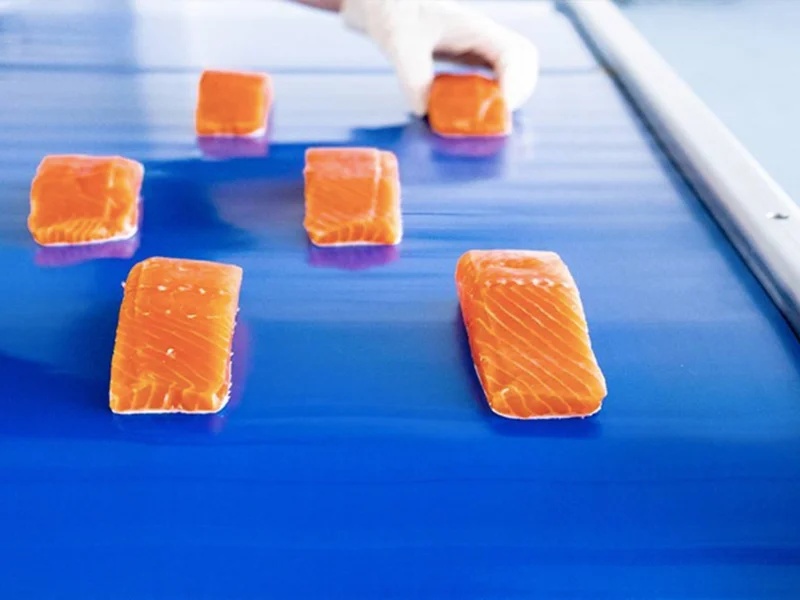
What Are Thermoplastic Postive Drive Belt?
Thermoplastic Postive Drive Belt are made from one piece of plastic, usually thermoplastic polyurethane (TPU). They don’t have seams or fabric that can trap dirt. This makes them great for places where cleanliness is a must, like seafood plants. Uyang Belting designs these belts to be super clean and easy to use.
Key Features of Easy-Clean Belts
- No Seams: Thermoplastic Postive Drive Beltare one solid piece. There are no gaps for germs to hide in.
- No Soaking: These belts don’t soak up water or oil. This stops germs and makes cleaning simple.
- Clean Surfaces: They have smooth or slightly bumpy surfaces. Dirt and germs wash off fast.
These features make Thermoplastic Postive Drive Belt perfect for seafood work, where staying clean is a big deal.
Enhancing Hygiene with Thermoplastic Postive Drive Belt
Keeping seafood safe is tough. Germs can ruin food and make people sick. Regular conveyor belts have fabric or seams that hold water and germs. Thermoplastic Postive Drive Belt from Uyang Belting fix these problems with their special design.
No Seams to Stop Germs
The one-piece design of Thermoplastic Postive Drive Belt means no spots for dirt to hide. Regular belts soak up water, but these stay dry. This is great for seafood, where wet fish can cause germ problems. For example, a shrimp line stays cleaner with these belts. They stop food from going bad.
Fighting Germs and Slimy Stuff
Germs are a big worry in seafood plants. Fish and shellfish can carry bacteria, especially from dirty water. Thermoplastic Postive Drive Belt are made to stop germs and slimy buildup. Their material doesn’t let bacteria grow. This keeps seafood safe to eat and meets food safety rules.
Easy-to-Clean Surfaces
The smooth surfaces of Thermoplastic Postive Drive Belt make cleaning quick. Workers can rinse them fast after a shift. No fish bits or dirt stay behind. These belts can handle tough cleaning, like high-pressure water or strong soaps, without breaking. For example, rinsing a belt after cutting salmon keeps it ready for the next job.
Boosting Efficiency in Seafood Processing Lines
Efficiency means working fast without wasting time or food. Thermoplastic Postive Drive Belt from Uyang Belting help seafood plants run better and get more done.
Less Time Cleaning
Cleaning regular belts takes forever. Thermoplastic Postive Drive Belt are different. Their smooth surfaces need less scrubbing. Workers can clean them quickly, so the line starts up again fast. This is huge in busy seafood plants where time is money. For example, a fish packing line can keep going with less stopping.
Better Food Handling and Less Waste
The smooth, dry surface of Thermoplastic Postive Drive Belt moves seafood gently. Fish and shrimp slide along without getting stuck or hurt. This keeps seafood fresh and cuts down on waste. For instance, shrimp don’t get damaged on these belts, so less food is thrown out. Smoother movement makes the line work faster.
Saving Money on Cleaning and Fixes
Thermoplastic Postive Drive Belt might cost more at first, but they save money later. They need less water and soap for cleaning. They also last longer and don’t break as much, so repair costs are lower. Workers spend less time cleaning, which saves on labor. For example, a shellfish plant saves cash with these belts.
Real-World Applications and Success Stories
Lots of seafood plants use Thermoplastic Postive Drive Belt from Uyang Belting. They’ve seen big wins in keeping things clean and working fast.
Case Study 1: Salmon Processing Facility
A salmon plant switched to Uyang Belting’s Thermoplastic Postive Drive Belt. Cleaning got way faster, so they had less downtime. The belts handled tough cleaning without breaking. This meant more fish processed each day. The plant stayed clean and followed safety rules easily.

Case Study 2: Shrimp Processing Line
A shrimp plant had germ problems with old belts. They tried Thermoplastic Postive Drive Belt. The smooth surfaces stopped germs from spreading. The shrimp stayed safe to eat, and the line worked better. The plant could process more shrimp without safety worries.
Case Study 3: Shellfish Processing Operations
A shellfish plant had belts that kept breaking. They switched to Uyang Belting’s Thermoplastic Postive Drive Belt. Repairs dropped, and downtime went way down. The belts kept shellfish safe for export, meeting tough health rules.
More Ways Easy-Clean Belts Help Seafood Lines
Meeting Tough Safety Rules
Seafood plants must follow strict rules, like HACCP or FDA standards. Thermoplastic Postive Drive Belt are built for these rules. Their design stops germs and makes inspections easier. For example, a tuna plant can pass safety checks with these belts.
Handling Wet and Cold Conditions
Seafood lines are wet and often cold. Thermoplastic Postive Drive Belt are made for this. They don’t get hurt by water or cold, like when processing frozen fish. For instance, a belt can handle oysters from icy water without breaking.
Working with All Kinds of Seafood
These belts work for all seafood, from salmon to shrimp to mussels. They handle heavy or delicate fish without problems. For example, a crab line can move shells smoothly with Thermoplastic Postive Drive Belt. This makes them great for any seafood plant.
Choosing the Right Thermoplastic Postive Drive Belt for Your Needs
Picking the best Thermoplastic Postive Drive Belt from Uyang Belting means thinking about what your plant needs.
Things to Think About: Material, Thickness, Surface Texture
- Material: TPU is a great choice for Thermoplastic Postive Drive Belt. It’s strong and works well in wet seafood plants.
- Thickness: Pick a thicker belt for heavy seafood, like big fish. Thinner belts are good for light stuff, like shrimp.
- Surface Texture: Smooth surfaces are best for easy cleaning. Bumpy surfaces help grip wet fish in some jobs.
Custom Options for Your Work
Uyang Belting makes Thermoplastic Postive Drive Belt to fit your needs. You can pick thickness, texture, or color. Many plants choose blue belts to spot dirt or food bits easily. For example, a blue belt helps workers see a shrimp piece left behind.
Tips for Setting Up and Keeping Them Clean
Get pros to install your Thermoplastic Postive Drive Belt so they work right. Check them often to keep them in good shape. Clean them after every shift with water or safe soaps. For example, a quick rinse keeps a belt ready for the next day’s fish work.
How to Start Using Thermoplastic Postive Drive Belt
Talk to Experts
Work with Uyang Belting experts. They know seafood processing and can pick the right Thermoplastic Postive Drive Belt. They’ll make sure the belts fit your machines and work needs.
Test Them Out
Try Thermoplastic Postive Drive Belt on one line first. See how they help with cleaning and speed. For example, test them on a shrimp cutting line to check if they save time. If they work well, use them on more lines.
Train Your Team
Teach workers how to clean and care for Thermoplastic Postive Drive Belt. Show them how to rinse and check for wear. A trained team keeps belts working longer and saves money. For instance, a quick training can show workers how to spot dirt on a belt.
Why These Belts Are the Future
Thermoplastic Postive Drive Belt are changing seafood processing. They make it easier to stay clean and meet tough safety rules. They save time and money, which helps plants grow. As more people want safe, high-quality seafood, these belts will be a must-have. They’re a smart choice for any plant wanting to do better.
Conclusion
Using Thermoplastic Postive Drive Belt from Uyang Belting is a great move for seafood plants. They keep things super clean, meet safety rules, and make work faster. They cut cleaning time, save money, and keep seafood fresh. Whether you’re processing salmon, shrimp, or shellfish, these belts help you do better. By picking the right belt and taking care of it, you’ll make your plant safer and more efficient. Thermoplastic Postive Drive Belt are a key tool for the future of seafood processing.
FAQs
Q1. What are the main benefits of Thermoplastic Postive Drive Belt for seafood processing?
A: The primary benefits include improved hygiene, reduced cleaning time, lower maintenance costs, and enhanced product handling. These belts help prevent bacterial contamination and ensure compliance with food safety standards.
Q2. How do Thermoplastic Postive Drive Belt reduce downtime in seafood processing?
A: Due to their smooth, seamless surface and resistance to moisture absorption, Thermoplastic Postive Drive Belt are easier to clean and require less frequent, intensive cleaning cycles, reducing downtime and improving operational efficiency.
Q3. Can Thermoplastic Postive Drive Belt be customized for specific seafood processing needs?
A: Yes, Uyang Belting offers customized Thermoplastic Postive Drive Belt in terms of material, thickness, surface texture, and color, ensuring that the belts meet the unique needs of different seafood processing applications.

